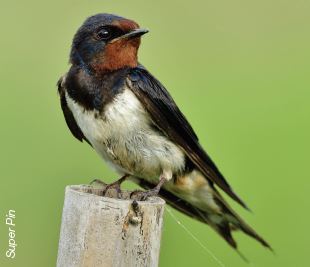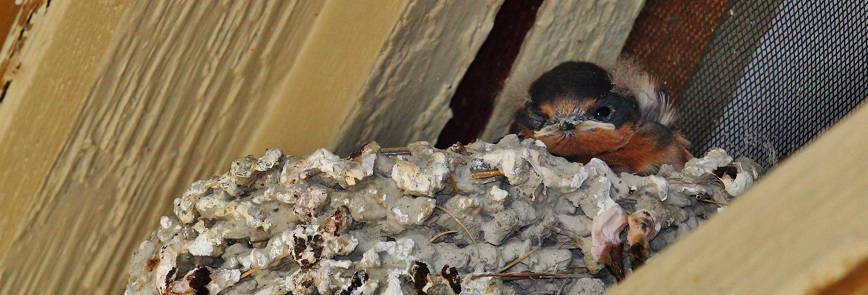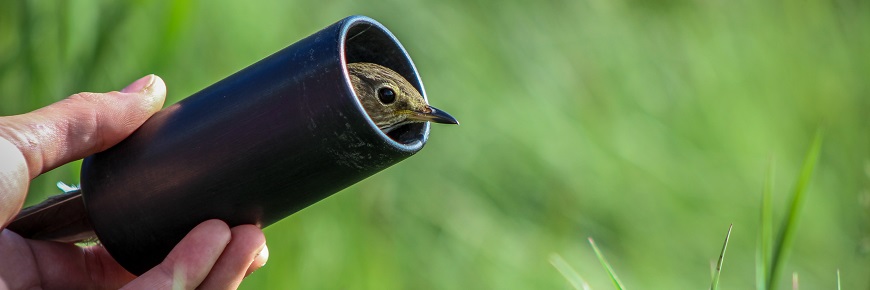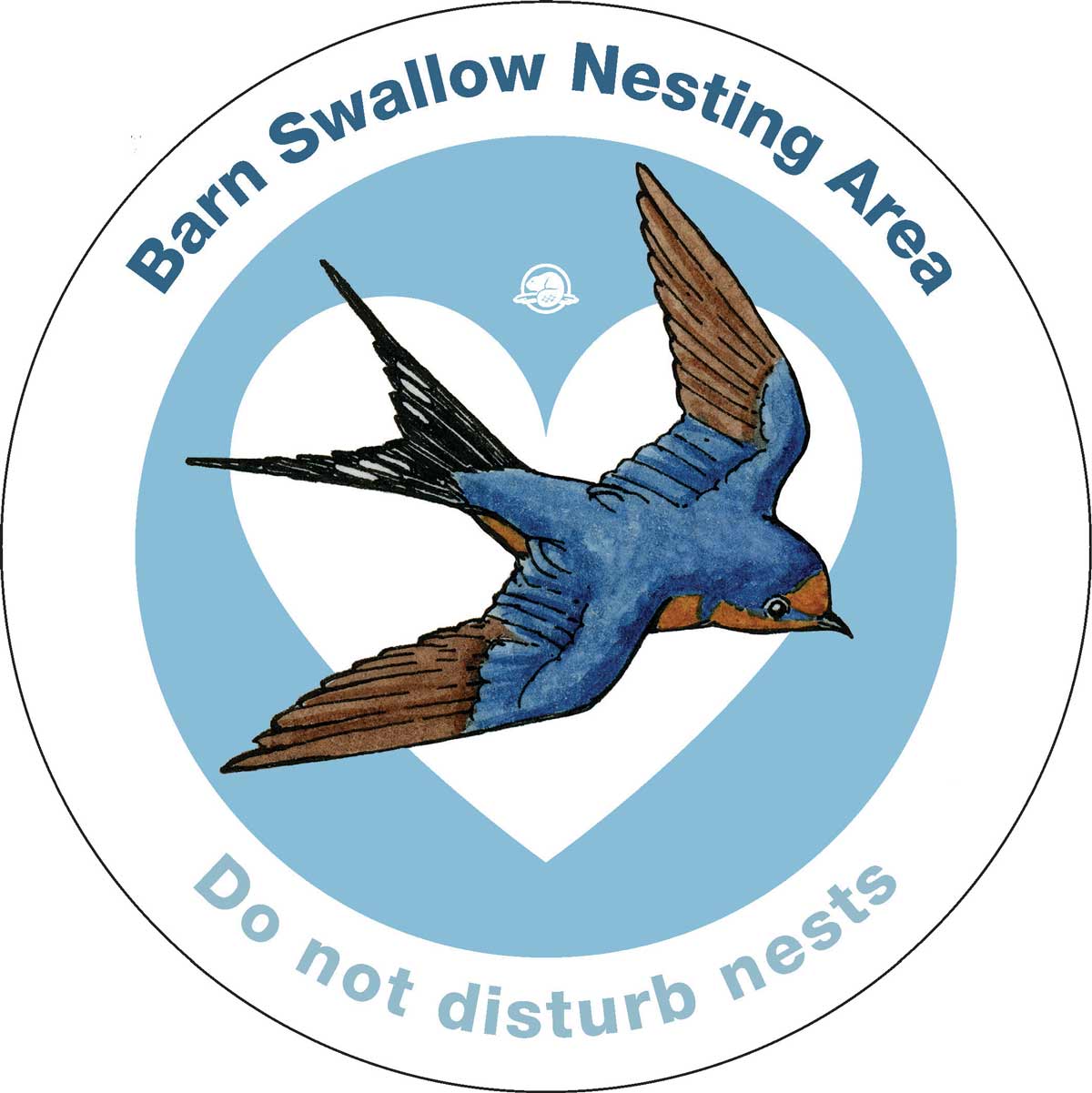
Barn swallow
Jasper National Park
Quick facts
Eats large flying insects - grasshoppers, dragonflies, wasps, moths
Lays 4-5 eggs once or twice per year
Nests in cup-shaped nests of mud built on barns, buildings, or bridges
Reuses nests from previous years; this is especially important for first-time parents
SARA status: Threatened (2017)

Barn swallows (Hirundo rustica) are medium-sized songbirds. They can be easily recognized by their forked tail, dark blue back and wings, chestnut throat and forehead, and cinnamon brown underside. They are one of the most common land birds around the world.
Where they live
Barn swallows travel thousands of kilometres each year, flying from summer breeding grounds in North America to wintering grounds in Central or South America.
Before the arrival of Europeans to North America, barn swallows nested in caves and holes on cliffs as well as on structures built by Indigenous peoples. Over time, they shifted to nesting entirely on human-made structures like bridges and the eaves of buildings. They hunt aerial insects while flying above grasslands, farm fields, shorelines, wetlands and other open spaces.

Why they are at risk
Migratory birds that eat flying insects have significantly declined around the world since the 1970s. The cause of this decline is likely the combined effects of many factors, including declining insect populations, habitat loss, and climate change.
Flying insect declines
The global decline in flying insects is not well understood. Some possible reasons include: 1) the use of pesticides – which are chemicals used to control weeds, insects and fungus, 2) methods used to boost agricultural production that affect soil and water sources, 3) extreme weather events, 4) destruction of wetlands and 5) the warming climate. Less bugs means less food for migratory birds.
Human development and activity
Changes to farming practices may be affecting barn swallow habitat. These include converting of pastureland to grain farming, increasing in large-scale monoculture farming, and reforestation of abandoned farmland.
There are some places, however, where appropriate habitat is increasing.
Climate change
Climate change may affect the barn swallow, its habitat and its migration routes in many ways. Changes to the patterns and severity of extreme weather events like fires, droughts and hurricanes all have the potential to impact the barn swallow and the availability of its insect prey.
How we are helping
Protecting nesting sites
We restore habitat when a nest has to be removed (such as when a building or bridge is replaced) by ensuring that there are appropriate places on the new structure for barn swallows to build a nest.
For example, when we replace bridges where swallows previously nested, we apply nest ledges or small areas of rough surface. New concrete bridges tend to be too smooth and barn swallows need attachment points to support their nests.
Monitoring
We actively search for nesting sites by inspecting buildings and bridges which are suitable habitat for barn swallows.
Nests may be identified at the end of barn swallow breeding season, and then monitored during the following breeding seasons to confirm that birds have returned to those nests.
We monitor a database for bird sightings at ebird.org. Share your sightings to contribute to this citizen science project.

How you can help
Know of a nest in Jasper? Contact Parks Canada Dispatch at 780-852-6155. Visit our web page with essential information for residents and businesses.
Download signs for barn swallow nests on your property. Either print it with your home printer on paper or cardstock or send the webpage link to your local sign shop and ask them to produce a durable outdoor sign. (17.78 cm diameter) Thanks Gulf Islands National Park Reserve!

Learn more
- Date modified :